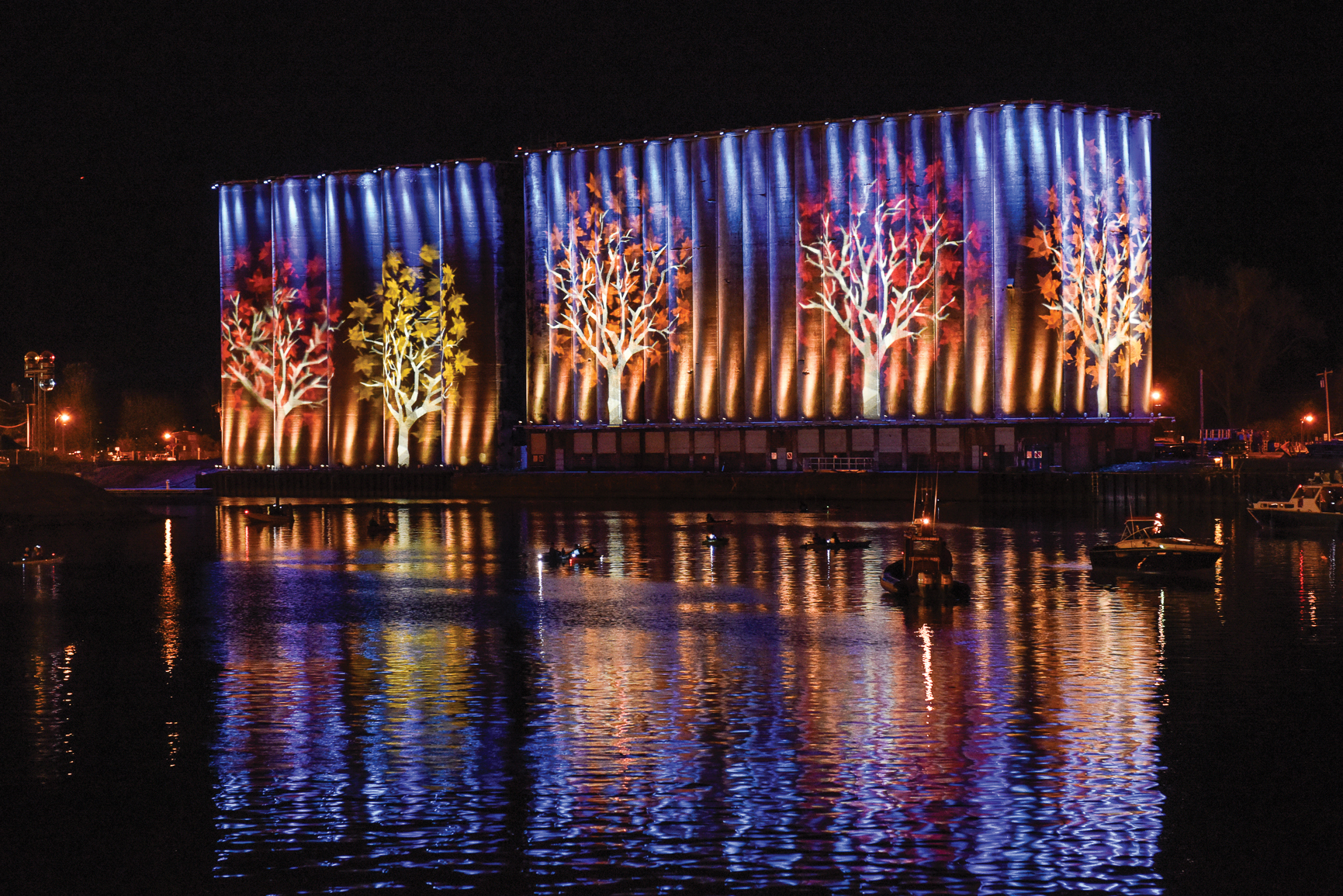Much like the city that backs them with boundless zeal, the Buffalo Bills have turned the page on seasons of defeat and retreat. With the surging Bills the talk of their plain-spoken village on the eastern shores of Lake Erie, Buffalo itself sparked some buzz at the recent annual conference of the International Economic Development Council in Oklahoma City.
“It’s refreshing to be at a meeting like that and have everybody know about the positive things going on in our region,” says Tom Kucharski, longtime president and CEO of Invest Buffalo Niagara, a privately funded alliance of eight counties of Western New York.
“It’s a lot better,” Kucharski muses, “than being pelted with the usual jokes about snow, chicken wings and falling-down buildings.”
Buffalo does have an abundance of those things. Snow is something you blow from your neighbor’s sidewalk if your neighbor hasn’t cleared yours first. Wings typically come with a choice of three sauces — hot, medium or mild — no frills. Once deemed too worthless to demolish, some of those surviving buildings now align with both the zeitgeist and an influx of capital, thus making them attractive to a stable of developers whose track records suggest they know what they are doing.
One of them, Douglas Jemal, offers that Buffalo, the second-largest city in New York State, “just needed a little kick in the butt.”
Jemal, a peripatetic early octogenarian who left an earlier mark on Washington, D.C., formed an instant bond with Buffalo during a 2016 road trip to a country music show. Now, having revived the city’s tallest skyscraper in spectacular fashion while acquiring more than a dozen other properties for redevelopment, he calls Buffalo home.
“They have all these magnificent buildings,” Jemal tells Site Selection. “I just look at them and say, ‘Well, let’s put this back together again.’”
“So much is going on!” Unbidden, that is what a new grandmother offers while downing a draft beer at Dulles ahead of her flight home to Buffalo Niagara International Airport. “And,” as Buffalonians are wont to say, “just in the last 10 years.” She’s a return migrator, having moved from the southern suburbs back into a legacy city that’s actually growing.
That’s where the story begins. Here are five things I learned about Buffalo during two-and-a-half days in mid-September in the Midwest city of the Northeast.
Buffalo Is Winning a Crucial Numbers Game
The ritually cited previous decade is one during which Buffalo — bucking the documented Rust Belt trend — achieved the holy grail of population growth. For Buffalo, it was the first time in seven decades, an era during which suburban flight and the loss of manufacturing jobs cut the city’s population virtually in half. Buffalo’s growth rate of 6.5% from 2010 to 2020 trailed only Columbus, Ohio, and Ann Arbor, Michigan, among medium-to-large Rust Belt cities.
That auspicious bump is less a result of return migrators or incoming millennials and Gen Zs than of the welcome that Buffalo has extended to refugees from some of the world’s bleakest corners, including Somalia, Iraq, Bangladesh and Burma. Attracted by jobs, housing and a place that also calls itself “The City of Good Neighbors,” close to 20,000 asylum seekers have settled in Buffalo in the past 20 years. Outreach to refugees has included housing and resettlement assistance, mental health services, childcare and English language instruction.
Buffalo’s growth rate of 6.5% from 2010 to 2020 trailed only Columbus, Ohio, and Ann Arbor, Michigan, among medium-to-large Rust Belt cities.
“We like to call it the refugee renaissance,” said Marlene Schillinger of Buffalo’s Jewish Family Services in an interview with a visiting team from Princeton University. “Buffalo,” she said, “wouldn’t be on the rise without refugees.”
For the many areas across the country that are bending over backward to try to retain or bolster their workforces, Buffalo’s example might be worth a look.
Innovation Is Alive
Peter Burakowski, associate director of Startup Ventures at the University at Buffalo’s Innovation Hub, offers another telling measure, this one tracking the rise of venture funding.
“Back in 2012, it was somewhere in the range of $6 million a year. Last year,” he says, “more than $500 million was invested in startups tied to this community.”
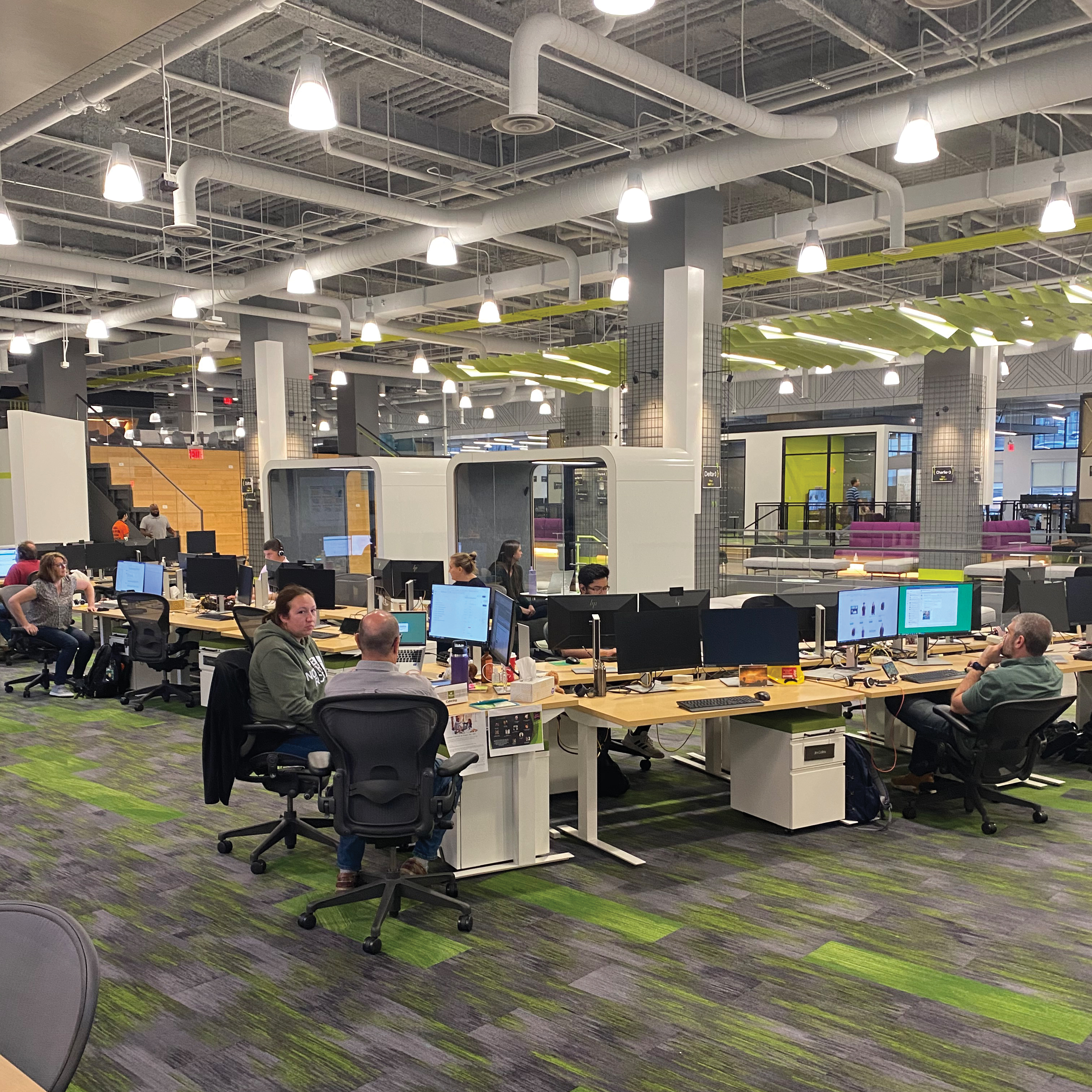
M&T Bank’s Buffalo Tech Hub
Photo by Gary Daughters
As twin pillars of Buffalo’s emerging innovation economy, the 120-acre Buffalo Niagara Medical Campus and Jemal’s 40-story Seneca One offer compelling if contrasting growth models. The Medical Campus, a muscular job generator that has evolved to encompass hospitals, research centers, incubators and scores of private companies, is a sprawling product of years of sometimes gnarly, publicly led collaboration. Seneca One is Jemal’s $120 million self-contained self-creation. Its anchor tenant is Buffalo-based M&T Bank, whose shiny new Tech Hub there is designed for 1,000 workers.
The M&T hub, says Jemal, “is on a whole other level than anything we have in Buffalo, and it shows that Buffalo can assemble a great workforce.” He boasts that M&T’s space “would cost $90 a square foot in Washington and $150 in New York. In Buffalo, it’s $20.”
Embedded on Seneca One’s 24th floor and funded largely by the state and the private Ralph C. Wilson, Jr. Foundation, startup accelerator 43North has made a significant splash, having helped spawn companies that hold a collective valuation of more than $2 billion. They include ACV Auctions, a digital search tool for retail vehicle shoppers. One of the initial winners of 43North’s annual pitch competition — which now awards a cool million dollars to each of five promising startups — ACV is Buffalo’s first unicorn, having gone public in 2021.
Raising capital, says co-founder Dan Magnuszewski, “was only difficult when we talked to West Coast investors. Others,” Magnuszewski tells Site Selection, “saw our Buffalo location as an interesting advantage because they recognized how cheap it is to run a company here. It was almost like they had uncovered this secret that nobody knew about.”
Sometimes Losing is Winning
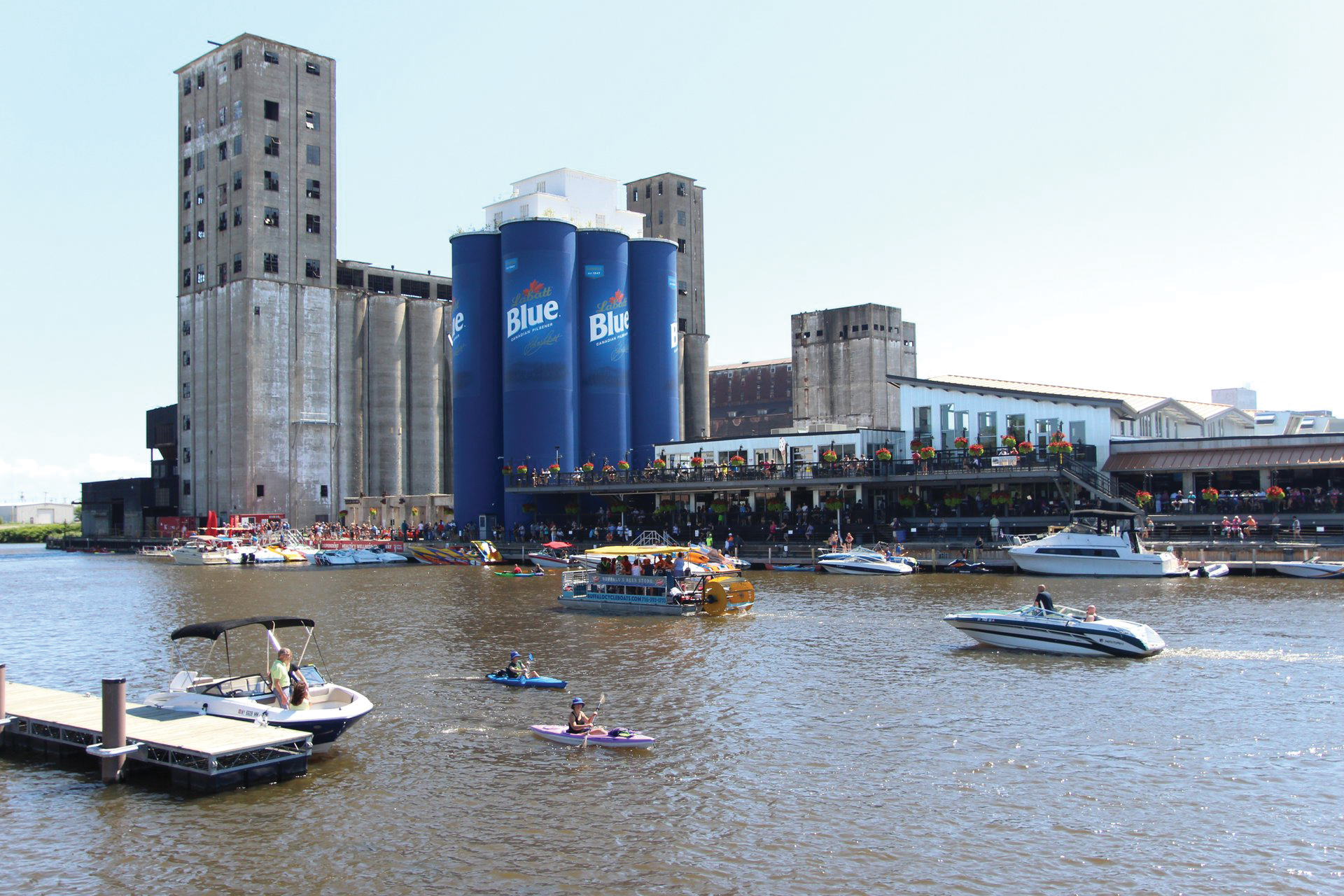
Buffalo’s riverfront has come alive.
Photo courtesy of Visit Buffalo Niagara
It’s revealing how many Buffalonians shake their heads today at how their city once pinned its hopes for revival on a retail outlet proposed for the banks of the Buffalo River, a Bass Pro Shop. Even with the bait of prime, riverfront property and a $35 million direct incentive, that Bass spit the hook.
Yet the ill-fated courtship that ended in 2010 seems to have served as a moment when Buffalo looked at itself in the mirror and resolved not just to aim higher but to bank its future on what makes Buffalo Buffalo.
That includes the restoration and readaptation of buildings designed by celebrated architects Frank Lloyd Wright, Louis Sullivan and H.H. Richardson, among others. Perhaps most visually striking is the transformation of the hulking grain silos that line Buffalo’s Outer Harbor, symbols as they are of their region’s former industrial might. With half a dozen painted to suggest a giant six-pack and others rigged to support rappelling, the former GLF silos anchor the RiverWorks, one of Buffalo’s expanding array of convivial gathering spots. The former Connecting Terminal complex serves as backdrop for a nightly light show. Developer Rick Smith’s 27-acre Silo City is a slowly evolving residential and arts community, with construction having recently begun on an initial 162 living units.
“These structures,” Smith tells Site Selection, “are important to our identity as having been the world’s largest grain port for the better part of a century.”
Consistent investment in the Outer Harbor, the 21-acre Canalside quarter and other waterfront projects, all undertaken under a citywide mantra of “Lighter Cheaper Quicker,” have resulted in more than $300 million in new development, according to New York Governor Kathy Hochul. In August, Gov. Hochul announced state funding to accelerate four major projects along both sides of the river, where the sight of boating Buffalonians reflects unmistakable verve.
“We’re going to completely transform our waterfront into a destination for everyone to enjoy,” Hochul said. “We are writing Buffalo’s comeback story.”
Albany Hearts Buffalo
For the State of New York, writing that story now includes a commitment to signing a $600 million check to help build the Bills a new stadium. Gov. Hochul, a Buffalo native, reportedly led months of secret talks among state officials, team owners and Buffalo’s Erie County that produced what is now the biggest such promise ever made to an NFL franchise. Such has been the governor’s attention to Buffalo that a recent Opinion item in The New York Times characterized it as an “obsession.”
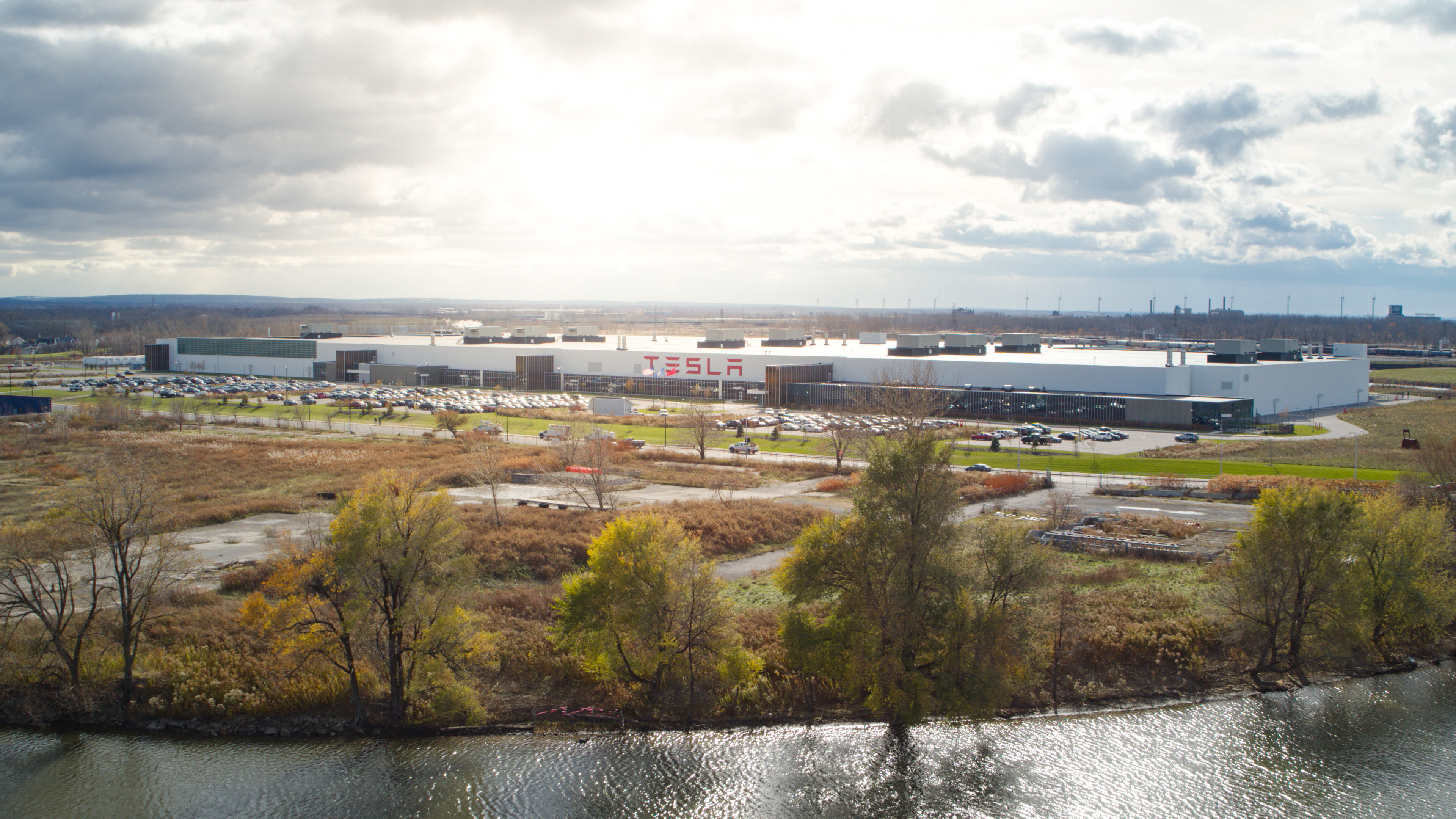
Tesla’s Gigafactory, now employing close to 1,500 workers, isn’t the only bright spot brought about by the Buffalo Billion.
Photo courtesy of Tesla
But the love from Albany predates Hochul. Former Gov. Andrew Cuomo’s “Buffalo Billion,” announced in 2012, is widely viewed as having laid the groundwork for Buffalo’s ongoing resurgence. The plan’s most conspicuous yield — the $750 million Solar City project on the site of a former steel plant — was purchased six years ago by Tesla, whose 1.2 million-sq.-ft. Buffalo Gigafactory now employs close to 1,500 workers. Tesla has pledged to create 5,000 clean energy jobs in New York State by 2026, many of those jobs expected to land in Buffalo.
“Buffalo Billion,” says Kucharski, “was designed to be transformational. And while everybody wants to talk about the Tesla plant, there are so many other initiatives funded by it that are going to sustain us well into the future.”
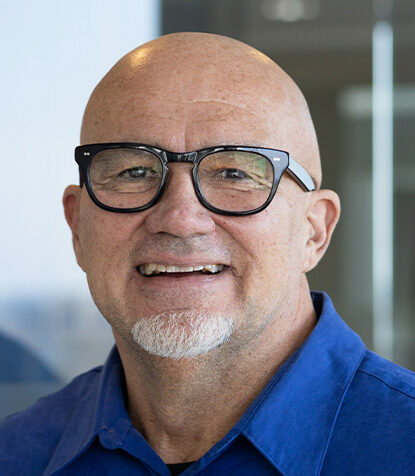
“We finally stopped fighting each other.”
— Tom Kucharski, President and CEO, Invest Buffalo Niagara
A five-county planning process under which the billion-dollar bounty was administered served to foster cohesion, inclusivity and mutual purpose among public fiefdoms and private interest groups that shared a history of disconnection, if not outright hostility. The plan that emerged called for targeted investments in advanced manufacturing, life sciences, agriculture and tourism, with additional emphasis on workforce development, entrepreneurship and smart growth.
Asked to identify the key to Buffalo’s turnaround, Kucharski offers a disarmingly simple answer.
“We finally stopped fighting each other,” he says.
Even After an Unspeakable Tragedy, East Buffalo is On an Upswing
Judging not strictly by the sorrowful, makeshift memorial that still lines the parking lot of Tops Friendly Market, perennially ignored East Buffalo may long bear the weight of the racially motivated massacre there — committed by a man who’d driven 200 miles to do it — that claimed the lives of 10 Black residents on May 14. Once celebrated as the best food market for miles around, the Tops store — by reopening in July — sadly has become a source of some division. Anger over 5/14 persists.
Yet it’s clear that some of East Buffalo’s most disadvantaged precincts are gaining lift along with the rest of the city. The Northland Corridor, long ago developed as a manufacturing center but since having atrophied economically, is absorbing fresh industrial and residential investment in concert with multiple, interwoven growth schemes.
As both anchor of the Northland Corridor Redevelopment plan and the envisioned driver of a clean technology hub, the $65 million Northland Workforce Training Center is an inspiration. Funded by Buffalo Billion, the facility has achieved a student completion rate of nearly 62%, more than double the national community college average, says President and CEO Stephen Tucker. Northland’s job placement rate, Tucker says, is an impressive 87%.
In partnership with Alfred State and Erie Community Colleges, Northland offers comprehensive training in mechatronics, machining, welding and electrical engineering. Fundamental to its success, believes Tucker, are “wraparound” services that include transportation, childcare, mental health care and food assistance along with what he calls “intentionally focused outreach and recruiting efforts targeting marginalized populations.”
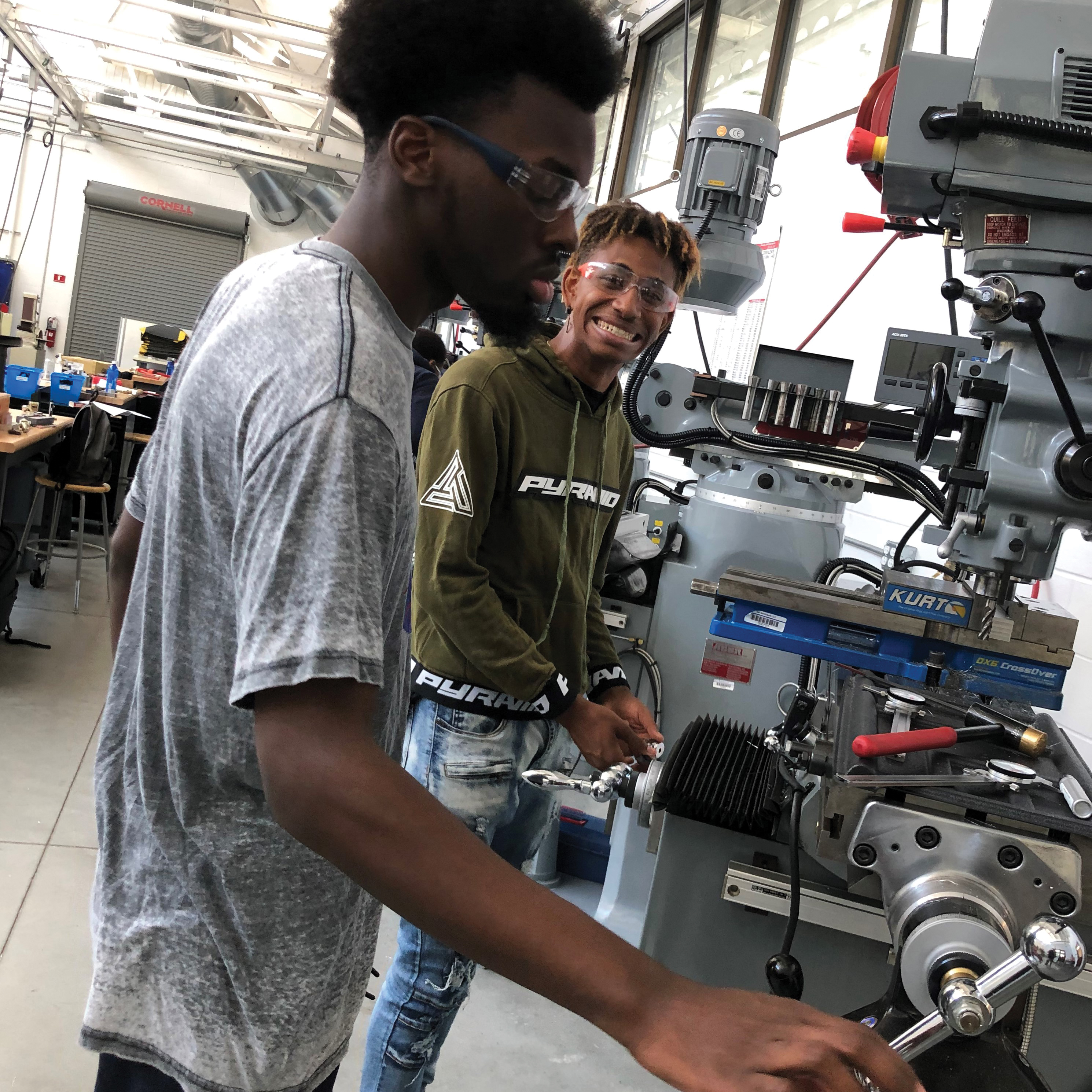
East Buffalo is starting to feel it.
Photo courtesy of Northland Workforce Training Center
A stream of well-trained workers from Northland was one of the factors that persuaded angel investor Kevin Christner to purchase the abandoned nearby home of the former Buffalo Foundry and Machine Company, an installation that cast armor for the military during the two World Wars and even made hinges for the Panama Canal, Christner says. Encompassing 190,000 sq. ft. on 14 acres, the facility is “a unicorn,” Christner believes, “awaiting a unicorn tenant.”
Beyond the Northland Workforce connection, Christner was lured by numerous, overlapping tax credits and incentives offered by the city, state and federal governments.
“I don’t think,” he says, “you could find a more incentive-laden site in the country.”
Things are clicking to the extent that the New York Power Authority is to install a new substation to support the corridor’s expanding industrial base, a project supported by a federal Build Back Better grant announced in September totaling $25 million. The grant is to be administered by Buffalo Urban Development Corporation, which is redeveloping multiple properties in the Northland corridor in partnership with the state, city and the New York Power Authority.
Buffalo, says Tucker, is having “courageous conversations” in the wake of 5/14.
“People understand that we can’t sweep these disparities under the rug. Within that environment, we’re in a place to really move forward. Buffalo,” he declares, “is a city on the move.”
